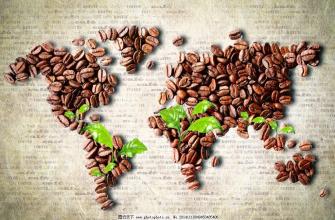Three native species of coffee tree-Famine shipwreck Coffee Tree Code
Generally speaking, Robusta beans are poor in taste, have 2 to 3 times the caffeine content of Arabica beans, and are cheap, mostly for the large coffee industry to produce instant coffee or low-cost comprehensive products. The coffee trees planted in Arabica are suitable for planting on fertile hillsides with good drainage at an altitude of about 1,000 to 2,000 meters. The climate for growth should not be too humid, but it still requires a continuous rainy season and abundant rainfall.
During the day, they like mild but not very hot temperatures and less than two hours of direct sunshine, so if they lack the afternoon showers or thick fog to report every day, local farmers have to plant many taller trees in the coffee garden for shade. At night, they want an environment of about ten degrees Celsius but not too low, because too warm will make the coffee berries grow too fast to produce small, strong, hard and high-quality coffee beans; if it is too cold to frost, the coffee trees will freeze to death.
The varieties that have become popular in recent years, belonging to the Ironka family, were obscure transplanted from the geisha mountains of southwest Ethiopia to Kenya, Tanzania and Costa Rica in 1913 and to Panama in the 1960s. it took half a century or so to make a splash, defeating Bourbon, Kaddura, Kaduai, Iron pickup and other victorious generals, and sold for $130per pound in 2007, ranking first on the list of high-priced boutique beans for several years.
Arabica coffee accounts for 75%-80%. Its excellent flavor and aroma make it the only coffee that can be drunk directly among these native species. But its resistance to dryness, frost, diseases and insect pests is too low, especially the natural enemy of coffee-leaf rust.
Arabica coffee beans are mainly grown in South America (except parts of Argentina and Brazil), Central America, Africa (Kenya, Ethiopia, etc.), Asia (including parts of Yemen, India and Papua New Guinea)

Important Notice :
前街咖啡 FrontStreet Coffee has moved to new addredd:
FrontStreet Coffee Address: 315,Donghua East Road,GuangZhou
Tel:020 38364473
- Prev

The difference in taste between sun-washed and semi-washed coffee
The taste of sun-washed coffee is the same as that of semi-washed coffee. The first step is to pick off the fruit when it turns red, but instead of throwing it into the fermentation pool, use a machine to remove the peel, spread the berries on the ground, dry them and then wet them, and use a special machine to grind off the dried pulp and remove the seeds. Most of Mantenin in Indonesia adopts semi-washing method. Brazil has also begun to use semi-washing in recent years, which is the only part-time method in the world.
- Next

How to assemble and grind the coffee bean machine and how to drink it?
The highest temperature range is HIGH 255C (theoretically can reach the highest temperature), MEDIUM 235C, LOW 199C. But I found that the hot air roaster is greatly affected by external temperature and environmental factors. I don't know if direct fire or semi-direct fire has the same problem. I turn on the air conditioner indoors or not, indoors or outdoors
Related
- What brand of black coffee is the most authentic and delicious? what are the characteristics of the flavor of the authentic Rose Summer Black Coffee?
- Introduction to the principle and characteristics of the correct use of mocha pot A detailed course of mocha pot brewing coffee is described in five steps.
- Which is better, decaf or regular coffee? how is decaf made?
- How much is a bag of four cat coffee?
- How about four Cat Coffee or Nestle Coffee? why is it a cheap scam?
- Which is better, Yunnan four Cats Coffee or Nestle Coffee? How about cat coffee? is it a fake scam? why is it so cheap?
- How about Cat Coffee? what grade is a hoax? which instant coffee tastes better, four Cat Coffee, Nestle Coffee or G7 coffee?
- Process flow chart of coffee making-Starbucks coffee making process what coffee tastes good at Starbucks
- The top ten best coffee beans in the world Rose summer coffee or Tanzanian coffee tastes good
- Yunnan four cat coffee is good to drink?_four cat coffee is a big brand? four cat blue mountain coffee is fake?

